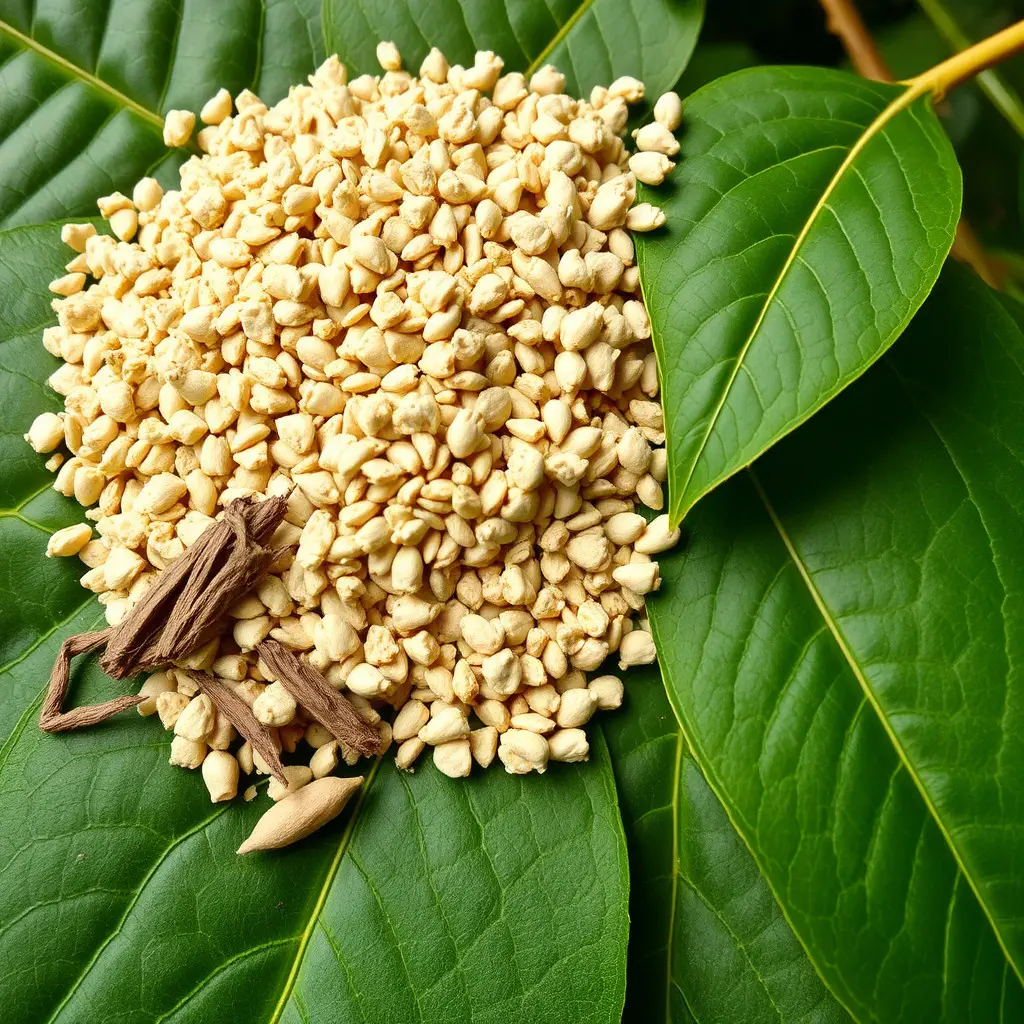Kratom (Mitragyna speciosa) is a plant-based substance that has been used to manage opioid withdrawal symptoms due to its active alkaloids affecting opioid receptors. While it may mitigate anxiety, muscle aches, and insomnia, the FDA has expressed concerns about its safety and efficacy, and its presence on drug tests can mimic opioid use, potentially disrupting recovery efforts for individuals under substance abuse treatment. The legal status of kratom varies by region, necessitating users to be aware of local laws. Blue lotus smoke also contains similar alkaloids and has been used for relief, but its effects are less studied, making it a subject of ongoing research. Prospective users should seek medical advice due to the potential for dependency and adverse effects, and those who are subject to drug testing should be aware that kratom use can result in false positives on opiate tests. Both substances raise complex issues for individuals seeking alternatives to manage withdrawal, highlighting the importance of professional guidance and informed decision-making.
Exploring the potential benefits of Kratom as an aid for opioid withdrawal, this article delves into the botanical’s role in mitigating symptoms. It unravels the scientific rationale supporting Kratom’s effects during detoxification and addresses legal considerations, including drug testing implications when incorporating the Blue Lotus into treatment regimens. Understanding these aspects is crucial for those navigating the complex journey of opioid cessation.
- Understanding Kratom's Role in Mitigating Opioid Withdrawal Symptoms
- The Science Behind Kratom and Its Effects on Opioid Detoxification
- Navigating Legalities, Drug Testing, and the Use of Blue Lotus in Opioid Withdrawal Management
Understanding Kratom's Role in Mitigating Opioid Withdrawal Symptoms

Kratom, a plant from Southeast Asia with the botanical name Mitragyna speciosa, has garnered attention in discussions surrounding opioid withdrawal due to its active alkaloids which can interact with opioid receptors. The mitigation of opioid withdrawal symptoms is one of the reasons individuals explore kratom as an alternative or complementary measure. The effects of kratom can vary depending on the dosage and strain, with some users reporting a reduction in withdrawal symptoms such as anxiety, muscle aches, and insomnia. These effects are often attributed to kratom’s agonistic properties on mu-opioid receptors, which can help alleviate the discomfort associated with opioid cessation.
In the context of managing withdrawal, kratom is considered by some to be a potentially effective tool. However, it is imperative to approach its use with caution. The FDA’s stance on kratom reflects the regulatory body’s concern regarding its safety and efficacy. Moreover, the interaction between kratom and drug tests for opioids can complicate matters; as such, individuals undergoing substance abuse treatment should be aware that kratom consumption may result in a positive drug test for opiates, which could affect their recovery journey. Users considering kratom as part of their withdrawal management strategy must weigh the potential benefits against the risks and legal implications. It is also crucial to consult with healthcare professionals before incorporating kratom into any treatment plan, especially given its potential to cause dependency and adverse effects. Additionally, the legality of kratom varies by region, so users must ensure they are complying with local laws. Blue Lotus, often associated with kratom due to similar alkaloid structures, has also been explored for its psychoactive properties, though its impact on opioid withdrawal is less studied and should be approached with further research and caution.
The Science Behind Kratom and Its Effects on Opioid Detoxification

mitigating opioid withdrawal symptoms has garnered significant attention within scientific and medical communities. Kratom, derived from the leaves of the Mitragyna speciosa tree, has been studied for its potential to aid in opioid detoxification due to its alkaloid composition, which shares similarities with those found in the blue lotus. The effects of kratom are primarily mediated by its interaction with opioid receptors in the brain, much like traditional opioids do, but without the same level of sedation or respiratory depression. This dual action allows for a potential reduction in withdrawal symptoms by mimicking the binding affinity of opioids while not creating additional dependence.
Clinical observations and preliminary research suggest that kratom may alleviate some of the most distressing aspects of opioid withdrawal, including pain, anxiety, and mood swings. However, it is crucial to approach its use with caution, as the safety and efficacy of kratom for this purpose remain subjects of ongoing investigation. Users considering kratom as a method to manage withdrawal symptoms should do so under medical supervision, especially given the potential for kratom to appear positive on drug tests due to its opioid-like effects, which can complicate treatment and recovery efforts. The balance between kratom’s therapeutic properties and its regulatory status is delicate, highlighting the need for more research to understand its role in opioid detoxification and its implications for those undergoing drug testing.
Navigating Legalities, Drug Testing, and the Use of Blue Lotus in Opioid Withdrawal Management

Navigating Kratom’s legal status is a complex matter for individuals seeking its use in managing opioid withdrawal symptoms. As of the knowledge cutoff in early 2023, kratom’s legality varies by region; while it is illegal in some states and countries, others have more lenient regulations. Users must familiarize themselves with local laws to avoid legal repercussions. The use of kratom as an adjunct in withdrawal management has been a topic of debate, with anecdotal reports suggesting its efficacy in alleviating symptoms like anxiety and pain associated with opioid cessation. However, due diligence is required, as the FDA has issued warnings about its safety, including potential risks when used with other substances or medications.
In parallel to legal considerations, individuals using kratom must also be aware of its impact on drug tests. Kratom contains compounds that can trigger positive results for opiates on standard drug screens, which can lead to misinterpretation and unwarranted scrutiny in employment or legal settings. Alternatively, blue lotus, a plant traditionally used in ancient medicinal practices, has gained attention for its potential role in withdrawal management. While research is ongoing, some users report that blue lotus smoke, which contains harmonine—a compound similar to those found in kratom—may help ease certain withdrawal symptoms. It’s crucial for individuals to approach the use of blue lotus with caution and to consult healthcare professionals before integrating it into their recovery strategy, considering its own legal status and potential interactions with other substances. Drug testing policies regarding such plant-based treatments can be inconsistent, further complicating the use of these alternatives in a regulated environment.
Kratom’s potential as an aid for managing opioid withdrawal symptoms presents a multifaceted approach to a challenging issue. The scientific evidence supporting its role in mitigating the adverse effects of detoxification warrants careful consideration by healthcare providers and researchers alike. While navigating the complex legal landscape surrounding kratom use, it is imperative to also understand the implications of its interaction with drug tests, particularly when considering the use of complementary substances like blue lotus. As this discussion highlights, the integration of such natural compounds requires a nuanced approach that balances the therapeutic potential with legal and safety considerations. Future research will undoubtedly shed more light on the efficacy and safest application of kratom in addressing opioid withdrawal symptoms, ensuring better outcomes for those seeking recovery.






